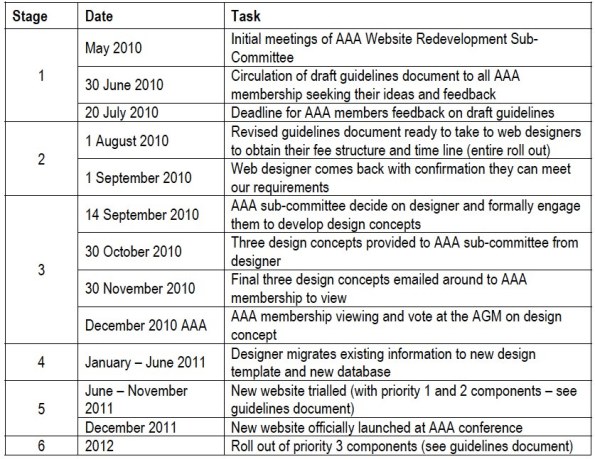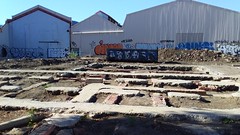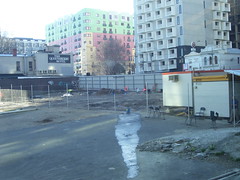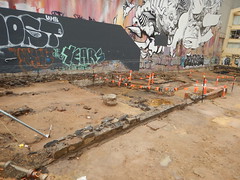The AAA website (http://www.australianarchaeologicalassociation.com.au) is a key to our education and promotional strategies, and in 2009 received an average of 108 hits per day (with 71% of those being from first time visitors). Website statistics and our understanding of our users indicates there are five main groups who utilise the AAA website:
- AAA Members (ca 750 in 2009)
- Other professional archaeologists who are not members
- Students, teachers and people wanting to study archaeology
- Other members of the general public
- AAA Executive
The membership database associated with the website also serves as the main administrative repository for information about our membership, and is where membership records are maintained and manually updated annually.

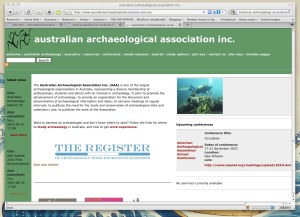 As reported in the 2009 Webmaster’s annual report, it has been five years since the website was launched and, despite its popularity, it is not serving any of the user groups identified above in particularly efficient or effective ways. At present, maintaining the web pages and membership database are complicated, time consuming tasks that are particularly onerous responsibilities of the Webmaster and Membership Secretaries; however, website and database technologies have improved dramatically and this need not be the case. Further, the website is now looking somewhat ‘dated’ and without wanting to radically change our branding there have been suggestions from the membership that it might be time for a fresh look. As such, the AAA Executive feels it is time to work towards a relaunch of the site so as to allow us to better meet the expectations and needs of our various user groups. Accordingly we have formed a sub-committee to oversee this important task. The AAA Website Redevelopment Sub-Committee comprises the following people
As reported in the 2009 Webmaster’s annual report, it has been five years since the website was launched and, despite its popularity, it is not serving any of the user groups identified above in particularly efficient or effective ways. At present, maintaining the web pages and membership database are complicated, time consuming tasks that are particularly onerous responsibilities of the Webmaster and Membership Secretaries; however, website and database technologies have improved dramatically and this need not be the case. Further, the website is now looking somewhat ‘dated’ and without wanting to radically change our branding there have been suggestions from the membership that it might be time for a fresh look. As such, the AAA Executive feels it is time to work towards a relaunch of the site so as to allow us to better meet the expectations and needs of our various user groups. Accordingly we have formed a sub-committee to oversee this important task. The AAA Website Redevelopment Sub-Committee comprises the following people
- Sam Bolton (Webmaster) – webmaster@australianarchaeology.com
- Luke Kirkwood – luke.kirkwood@gmail.com
- Mick Morrison (Treasurer) – treasurer@australianarchaeology.com
- Dan Rosendahl (Membership Secretary) – membershipsecretary@australianarchaeology.com
- Sean Ulm (Journal Editor) – journal@australianarchaeology.com
- Lynley Wallis (Chair) – president@australianarchaeology.com
- Andrew Wilson – wilson@acl.arts.usyd.edu.au
After preliminary meetings held last month in Brisbane and Adelaide, the AAA Website Redevelopment Sub-committee has identified the following proposed stages and timeline:
In order to ensure that the redeveloped website better serves the needs of our members, as part of Stage 1 we are seeking the input of all membership to help us develop a draft document to guide the redevelopment, thereby helping ensure the process results in the best outcomes for our organisation and membership. Some of the specific issues relating to the AAA website (as initially identified by the AAA Website Redevelopment Sub-Committee) are detailed below in order to make clear where the key concerns / areas for improvement lie, however, please bear in mind that the issues identified below are not set in stone, but rather are a starting point. Note also that many of the issues raised below are interlinked with other over-arching issues, such as facilities provided to Members being integral to the Content Management System implemented, and where the website is hosted, so in our comments below issues may be raised under more than one heading.
We are most interested in feedback from members. If after reading the following, AAA members have further input, advice or comments they wish to make on this matter please feel free to post a public comment at the end of this post (please note that comments will be moderated). Alternatively, if email or mail is your preferred medium, you can write to Lynley Wallis (President) at president@australianarchaeology.com or by mail to
Lynley Wallis
Aboriginal Environments Research Centre
PO Box 6114
University of Queensland
St Lucia QLD 4072
The deadline for comment and feedback is 20 July 2010. The full guidelines can be viewed here.

